In the intensive care room in a hospital stabilisation centre in Aguié, southern Niger, Harira Moussa sits beside her two-year-old boy. He is wrapped up in a blanket, with a feeding tube in his nose and bandages across his face. His skin is discoloured and flaky. He has been in hospital for 10 days.
“The treatment is going on, he’s better now,” she says, unconvincingly. “When I came he was swollen,” she recalls, describing symptoms of kwashiorkor, a type of severe malnutrition. The boy’s weight has increased to 6.5kg from 6.3kg on arrival – still about half the expected weight for a boy his age, according to the World Health Organisation. His mother was quietly hopeful that he would be okay.
Moussa brought the boy to the hospital on a motorcycle from their home, 21km away. This is his second time being admitted – the last was a few months ago when he had the same symptoms. He spent 20 days in the ward that time, before receiving medicine and food to take home, including rice, beans and Plumpy’Nut nutritional paste. It lasted a month, Moussa says, a challenging period in which she wondered whether to punish her other children for “snatching” his food without permission. They were hungry too.
This boy has a disability, she explains, looking at him. His fingers don’t open properly and he can struggle to feed himself – something that becomes redundant when there is nothing available to eat.
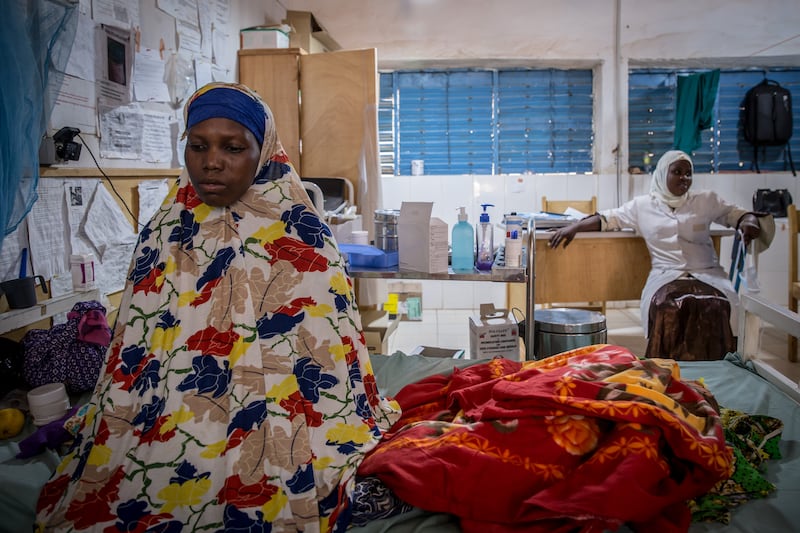
Moussa’s husband had an accident last year and his arm was broken so he couldn’t take care of their two-acre farm well. In the past they would have grown millet, beans, sorghum and peanuts.
Neighbours and friends usually help each other out but this year they had bad harvests too. “There wasn’t enough rain. Last year was better than this year. When I was younger the harvest was better than now,” Moussa says.
Her children often go without eating until noon, after Moussa goes out to beg for anything anyone can spare for them. “The children, they cry when they are hungry, they disturb me so much. I give them what’s available and ask them to be patient, something will come soon,” she says. How will they get by for the rest of the year? She has no idea. Harvest season is not until October.
**
Widespread malnutrition has long been a problem in Niger but the situation is getting worse, aid workers and authorities say. The landlocked west African country of about 25 million people, and the surrounding Sahel region, is on the front lines of the climate crisis.
Across the Sahel, temperatures are likely to rise at 1.5 times the rate of other parts of the world, according to UN projections. By 2080, they may have risen up to 4.3 degrees higher than pre-industrial levels.
The region is also experiencing Islamist insurgencies, banditry and other violence, and Niger’s neighbours – Mali and Burkina Faso – have seen two coups each in the past three years.
Niger is relatively stable in comparison though certain areas, including land along the borders, are inaccessible to humanitarian workers, says Ilaria Manunza, Niger country director for Save the Children. “On occasions, I can barely go to the field, the most affected areas. [The] UN and donors use an armed escort which NGOs do not, our principles are basically based on community acceptance,” she says, adding that there is a risk of kidnapping or even killings.
Like everywhere else, Niger has been impacted by the Ukraine war. While humanitarian budgets haven’t been cut, Manunza says, they haven’t increased in line with need, possibly because so much international attention is diverted right now.
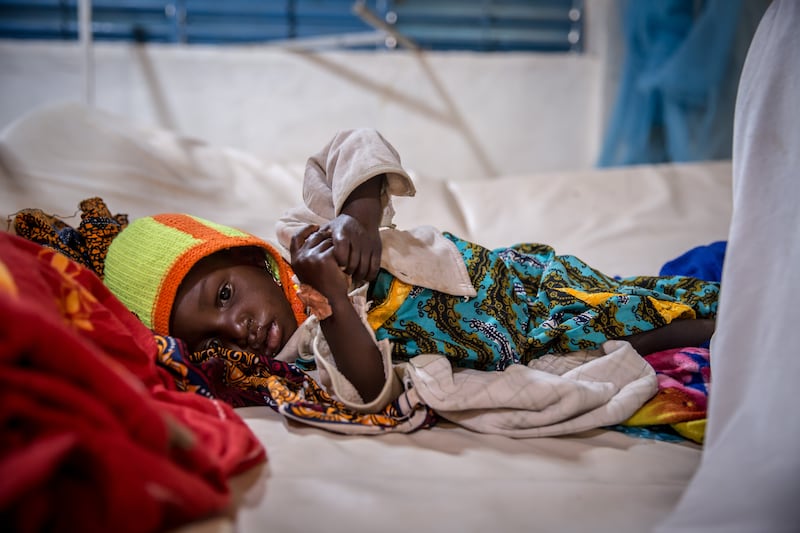
Prices are increasing, she says, particularly that of fertiliser, making it unaffordable for small-scale Nigerien farmers who need it to improve their harvests. “Without fertilisers [there are] less crops and less production, with the harvest being very lean [anyway, because of] the climate change effects.”
Last year, African Development Bank president Akinwumi Adesina said the war in Ukraine had pushed fertiliser prices in Africa up by at least 300 per cent. He estimated that food production in Africa would decrease by at least 20 per cent as a result of fertiliser shortages.
Climate change is adding to everyone’s problems. Manunza says flash floods mean “entire villages are flushed away. This is creating displacement of people, not due to conflict but due to climate change”.
“We would hope that Niger is given a little bit more attention internationally,” she adds. “It’s an underreported crisis, very highly underreported ... Projections in general don’t look good, both in terms of insecurity and food security in general.”
**
The hospital in Aguié is about 80km from one of Niger’s largest cities, Maradi, and serves a region of more than 350,000 people. It is run largely by volunteers.
“We have challenges to see how we can keep on working,” says head of medicine Dr Musa Boubacar. For staff wages in particular they are largely dependent on aid organisations and donations. Save the Children, Alima, Unicef and Médecins Sans Frontières have all helped the hospital in various ways, but a lot of aid money is targeted towards the “peak” malnutrition season, which takes place in the months before the October harvests.
Funding even for that time this year is still not guaranteed. Outside of peak season, malnourished children continue to be admitted but the only doctors working in the stabilisation centre are unpaid volunteers, as are many of the support staff. “It is a situation that can have a negative impact on the outcomes,” Boubacar says.
The hospital’s paediatric unit has a total capacity of 125 beds. During peak season hospital workers will construct tents outside to fit in all the malnourished children. In total, in 2022, the number of children admitted rose by about 25 per cent to 2,331, with 176 dying there, says Boubacar. Mortality rates hit a high last September, ahead of the harvest.
“Our objective is for work to continue,” the doctor adds. People from the local community come in to help with everything, from preparing milk, educating patients on good hygiene and driving ambulances. “They will not abandon us like this.”
* *
In the stabilisation wards, many mothers are ashamed to admit that their children are malnourished – which they refer to as “kwamaso” in Hausa, the local language. They will say that the child is just sick, before admitting that they have little or no food to eat at home.
The reality with malnutrition, local doctors explain, is that it exacerbates everything else, turning diseases or even simple illnesses that might not usually be dangerous into potentially fatal ones. And the children lying here are themselves a symptom of something much bigger.
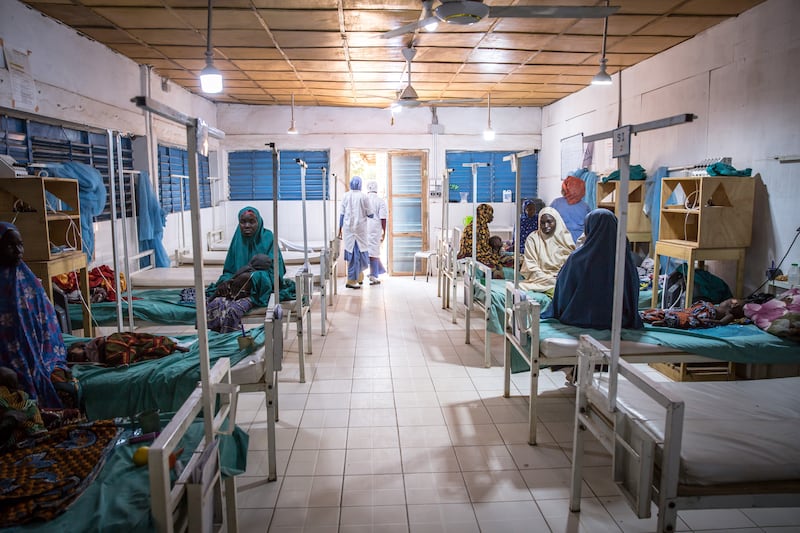
Climate change means that harvests do not produce as much as they once did, analysts say, and living off the land has become almost impossible for many – despite the fact that two-thirds of people in Sahel countries are reliant on agriculture or livestock to survive. This is fuelling migration. Boubacar estimates that as many as 90 per cent of malnourished children admitted to the hospital have fathers who moved from rural areas to cities or left Niger in search of work.
Those who stay in neighbouring countries might find themselves trapped in similar conditions. The malnutrition crisis extends to other countries in the region. During the lean season last year, the UN estimated that 7.7 million children aged under five could be malnourished across Niger, Burkina Faso, Mali and Chad, and almost 1.7 million people experience emergency levels of food insecurity. “A combination of violence, insecurity, deep poverty and record-high food prices is exacerbating malnutrition and driving millions to the fringes of survival,” said Martin Griffiths, the UN’s humanitarian affairs chief and emergency relief co-ordinator.
**
Djamilou Aboubacar, a volunteer doctor, leads a tour around the stabilisation wards in Aguié. The 30 year old qualified in 2019. Though his paid contract has ended, he says he will keep turning up to work here each day until he gets another job. “In their condition, it’s very crucial to have a doctor [available],” he says, gesturing at the sick children around him.
Malnutrition in this area is “rampant”, Aboubacar says. Though he is trained as a GP, he has become an expert on malnutrition after three years of work focused on it. He sees the same children turn up repeatedly; their parents unable to feed them. It makes him think about the limitations of his role. “I do whatever I can do medically but [regarding the] financial aspects, I can’t do anything to help these families. I find it upsetting.”
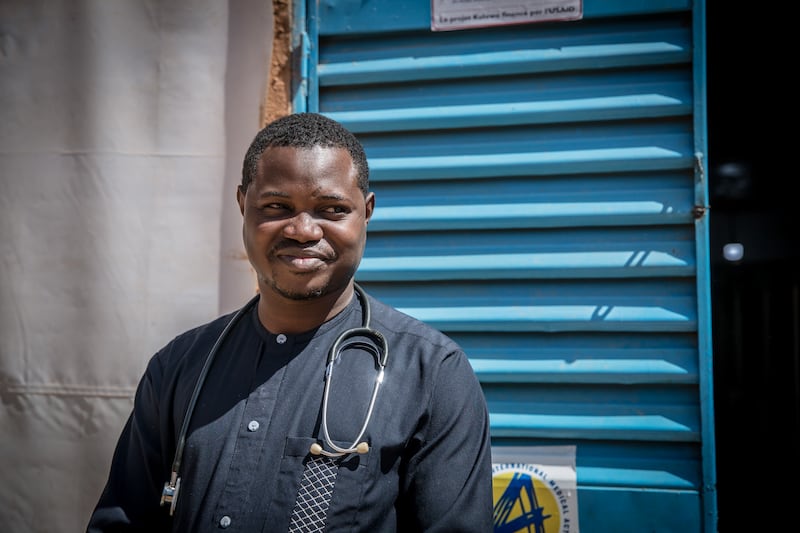
“The climate change has a lot of impacts on our job,” he says. “Many families here depend solely on farming and once the harvest is bad the consequences are so many. In the health centre, once the harvest is bad, we expect many cases of malnutrition and health problems. This year the harvest was bad so we are expecting many cases. Now some people still have some food left but in ... March, April, the stock will be finished and then problems will start.”
Beside the intensive care unit is an intermediary ward with 16 beds for children who are recovering. Women sit nearby, fanning babies in the heat or picking them up when they cry. The notes of Jingle Bells sound from a toy.
Zouera Saidou is here with her granddaughter, a two year old weighing 6.4kg who has been in hospital for the past two days. The girl’s nails are orange – a sign of vitamin deficiencies. They have come from Aljahia village, a three-hour walk away.
“Now she’s better,” says Saidou. “At the beginning it was malaria and diarrhoea. I went into the local health centre, got treatment, they realised she had the problem of malnutrition and we came here.”
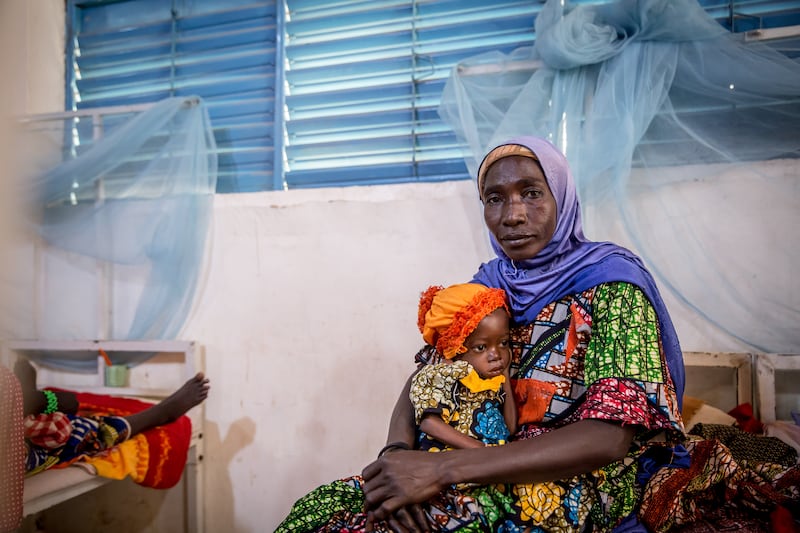
The child’s mother has stayed home with another baby: the two year old is one of seven siblings. In the village, Saidou says, “most people are poor, including us. Especially when the rainy season is not good, like this year. We’re among the people who have food problems.”
They drink millet porridge in the morning, she says, eat rice and beans for lunch and have millet paste for dinner. This is possible at the moment but with the next harvest eight months away, and only some millet and beans left, Saidou has no idea how they will get by until then. “We really need help,” she says.
“Many people survive because of solidarity; if you don’t have something, you get it from your neighbours, your relatives. They will help you. Very few people have enough to share with others but the majority are willing to share, but they don’t have enough even for themselves.”
Nearby is Karima Ali (35) with her two-year-old daughter. They rode six hours on a motorbike to reach the hospital and were admitted two days before. “It wasn’t as a result of malnutrition,” she says of her child’s condition. “But in general people have been having problems getting enough food where I’m from because food is expensive now and they don’t have the financial means.”
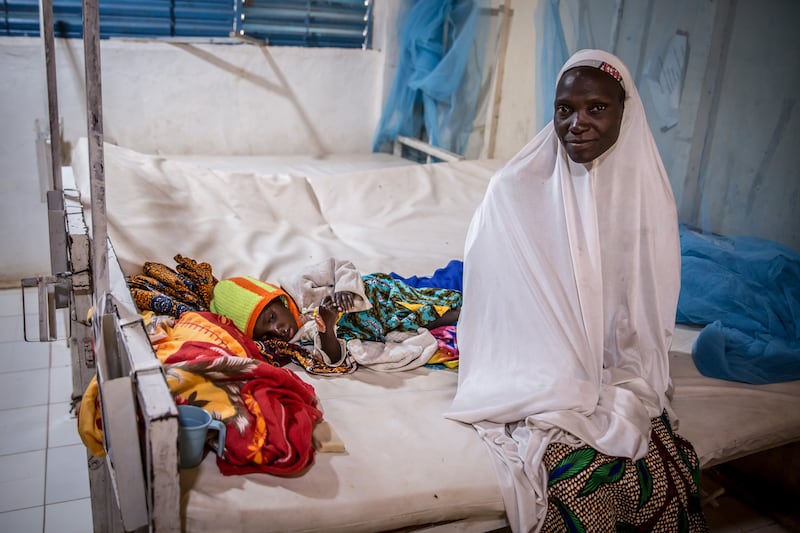
**
Sitting in his office in the capital Niamey, Laouan Magagi, Niger’s minister of humanitarian affairs, is honest about the challenges facing his country. “There is nothing to eat and we need to come into a humanitarian assistance mode,” he says. “We’re seeing some climate change, especially since 2011. One year out of two Niger is affected by drought and the other by floods which wasn’t the case ... Damages are huge in terms of food security.”
The rainy season used to stretch from May to October, he says, but now it could be better described as lasting from July to August. “It’s shortened to two months but very heavy,” he adds, referring to the increased frequency of floods.
The government has begun developing three-year food security plans instead of dealing with the crisis year on year, says Magagi. They aim to spend 450 billion CFA franc (€690 million) annually to support vulnerable families. Each year there are 2.5 million people in need on average, though this went up to 4.4 million in 2021 – an “exceptional” figure, the minister says. The projection for 2023 is 2.9 million. “People with food stocks now will use them by March. People not in food insecurity now will be by April,” Magagi says.
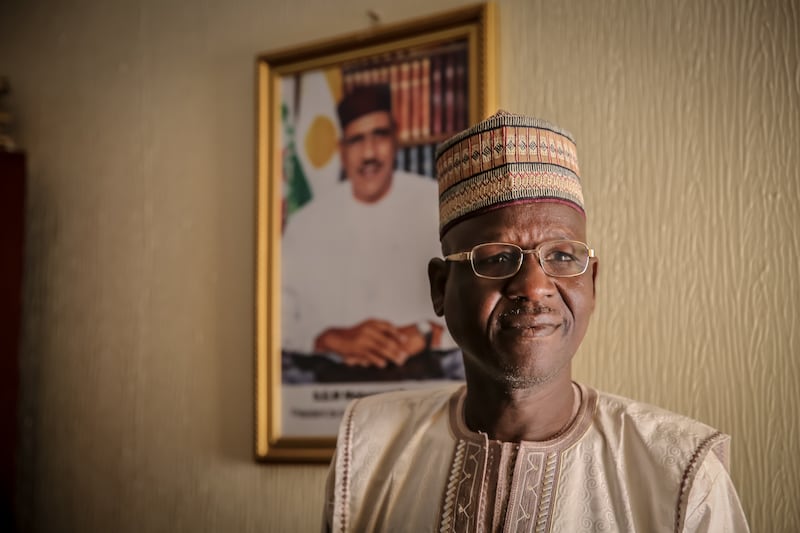
Under previous president Mahamadou Issoufou, who was in power from 2011 to 2021, planned spending on things such as food security and water provision had to be cut because of increased security needs, Magagi says, adding that “protection starts with security”.
About 19 per cent of the national budget was spent on security and defence while a planned 10 per cent for water provision was cut to 3 per cent and the 20 per cent that was supposed to be spent on food security was cut to 15 per cent. “Overall, they initially budgeted for more humanitarian and less security, ended up spending more on security and less on humanitarian,” Magagi says.
Investments are needed, he says, to deal with the effects of climate change. “The current investments are very lean, very little.” Only 1 per cent of rainwater is being captured, for example, technology is needed for that and “even to work the fields and increase productivity”.
In the longer term, Magagi says, he wants Niger to get to a position where it can stop relying on external assistance completely, even if that might be far off. “If we’re able to ensure there’s food, it will be a win-win.”











